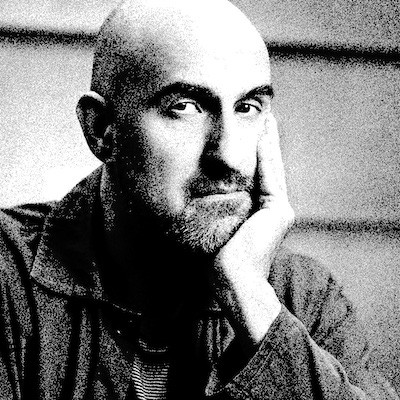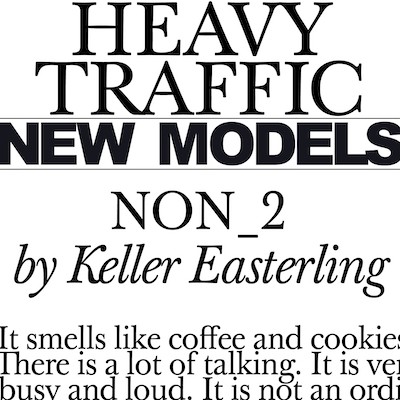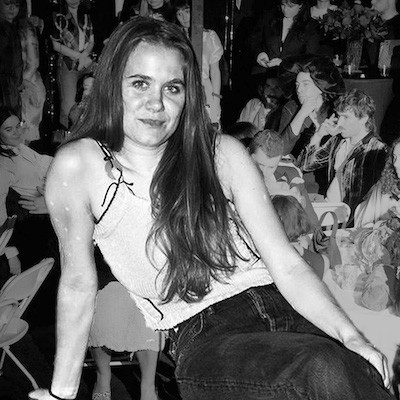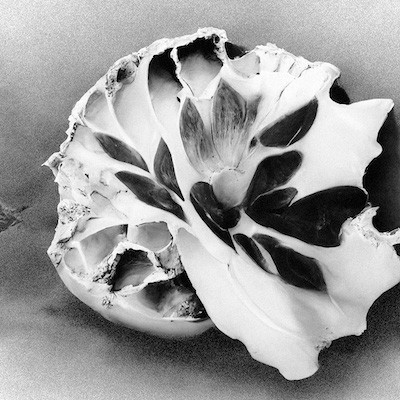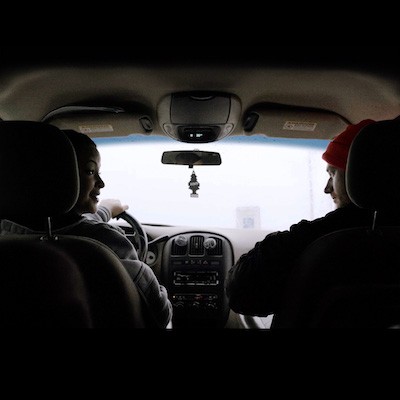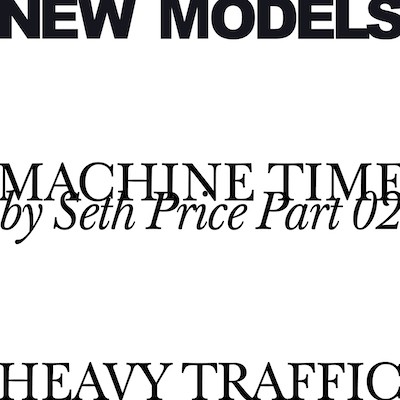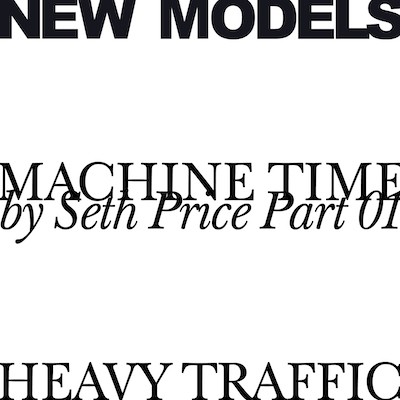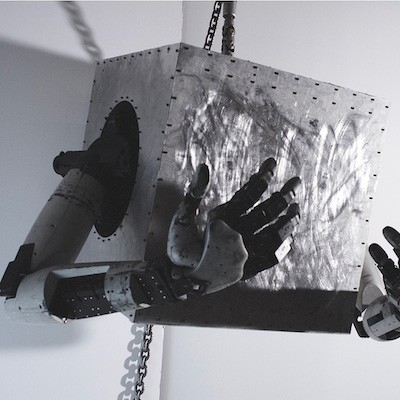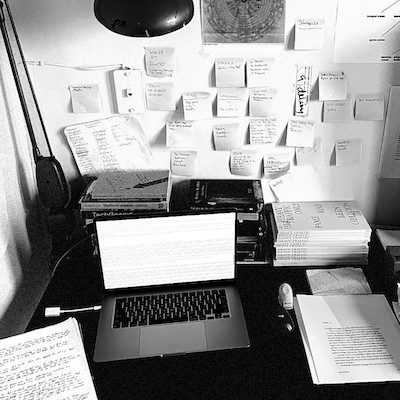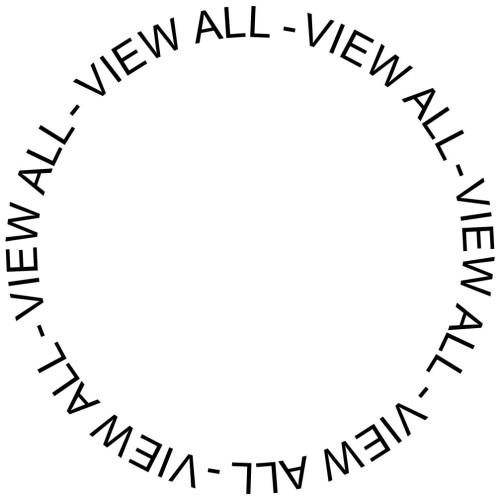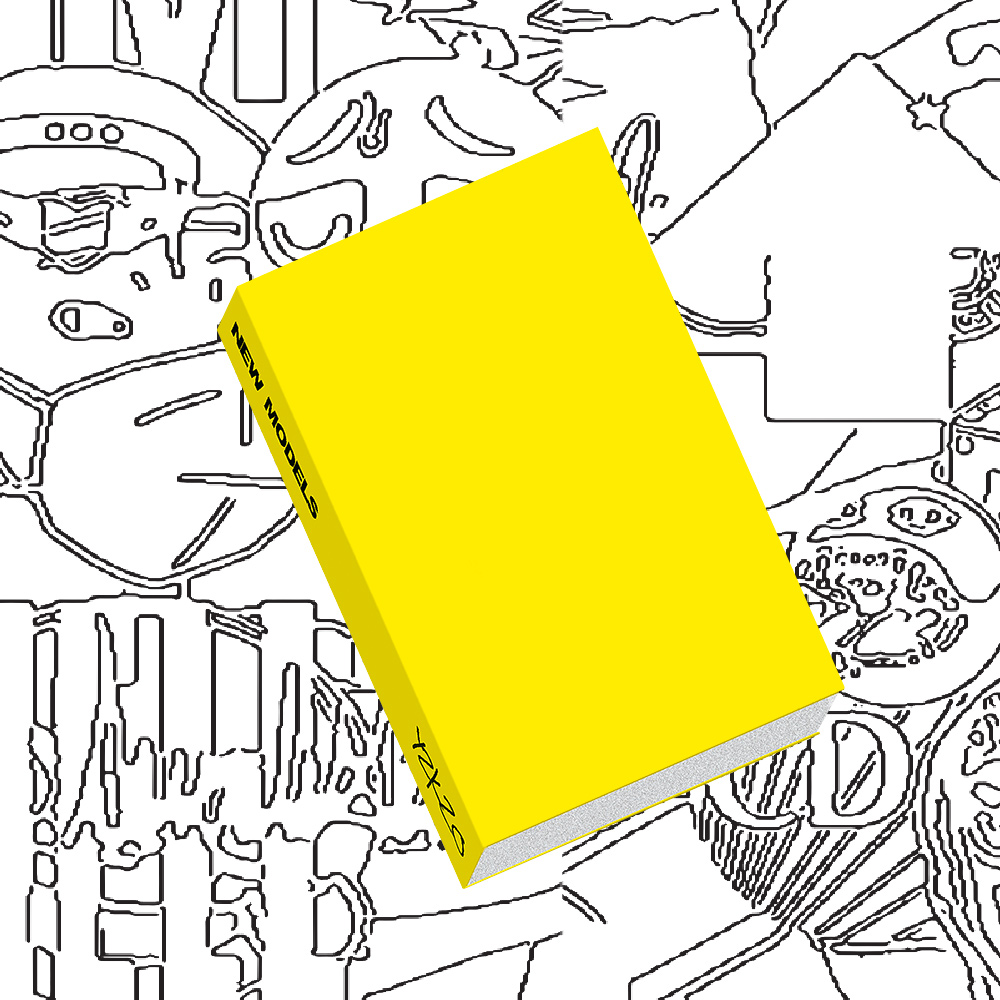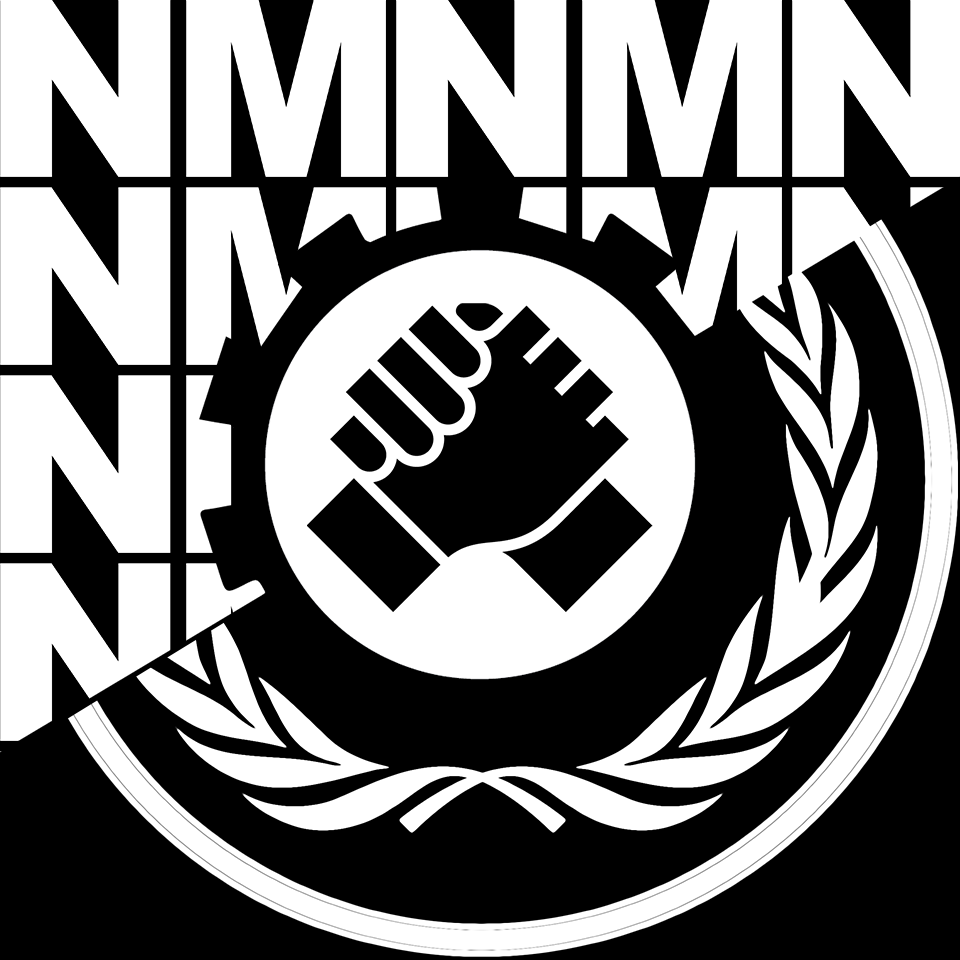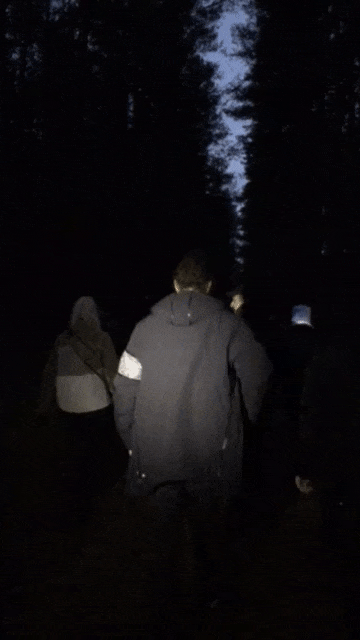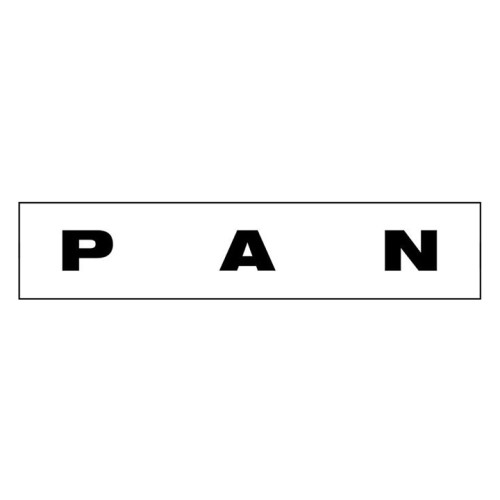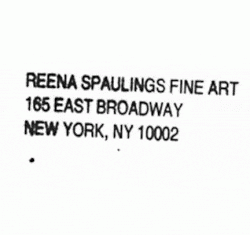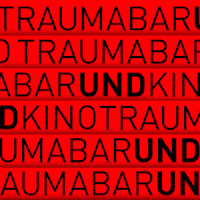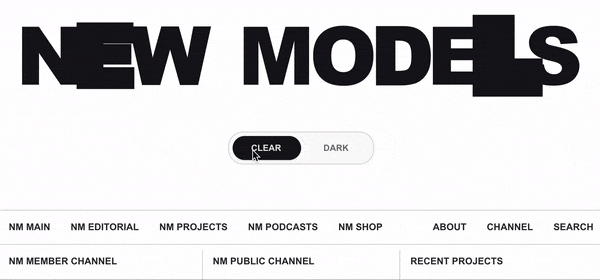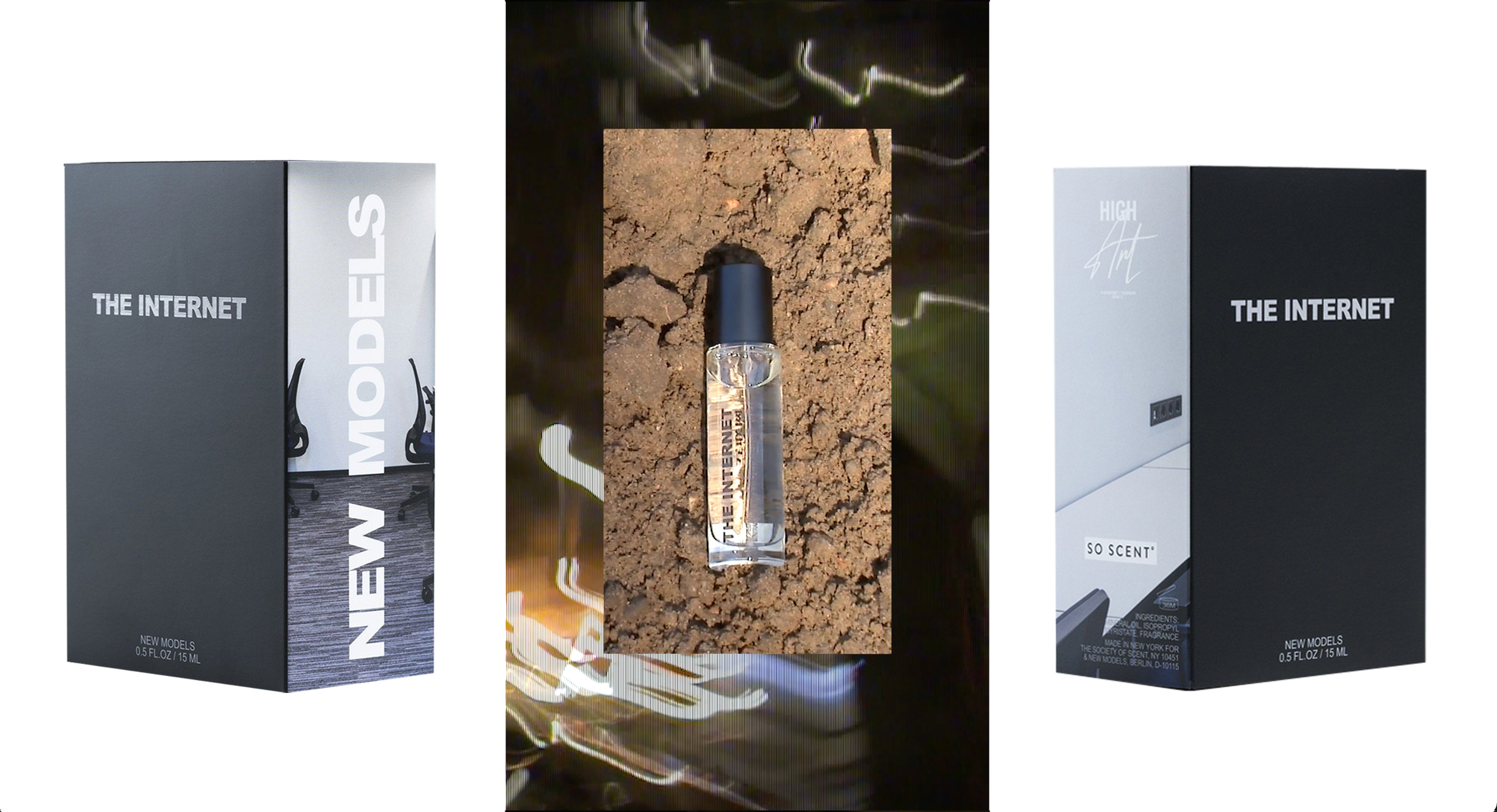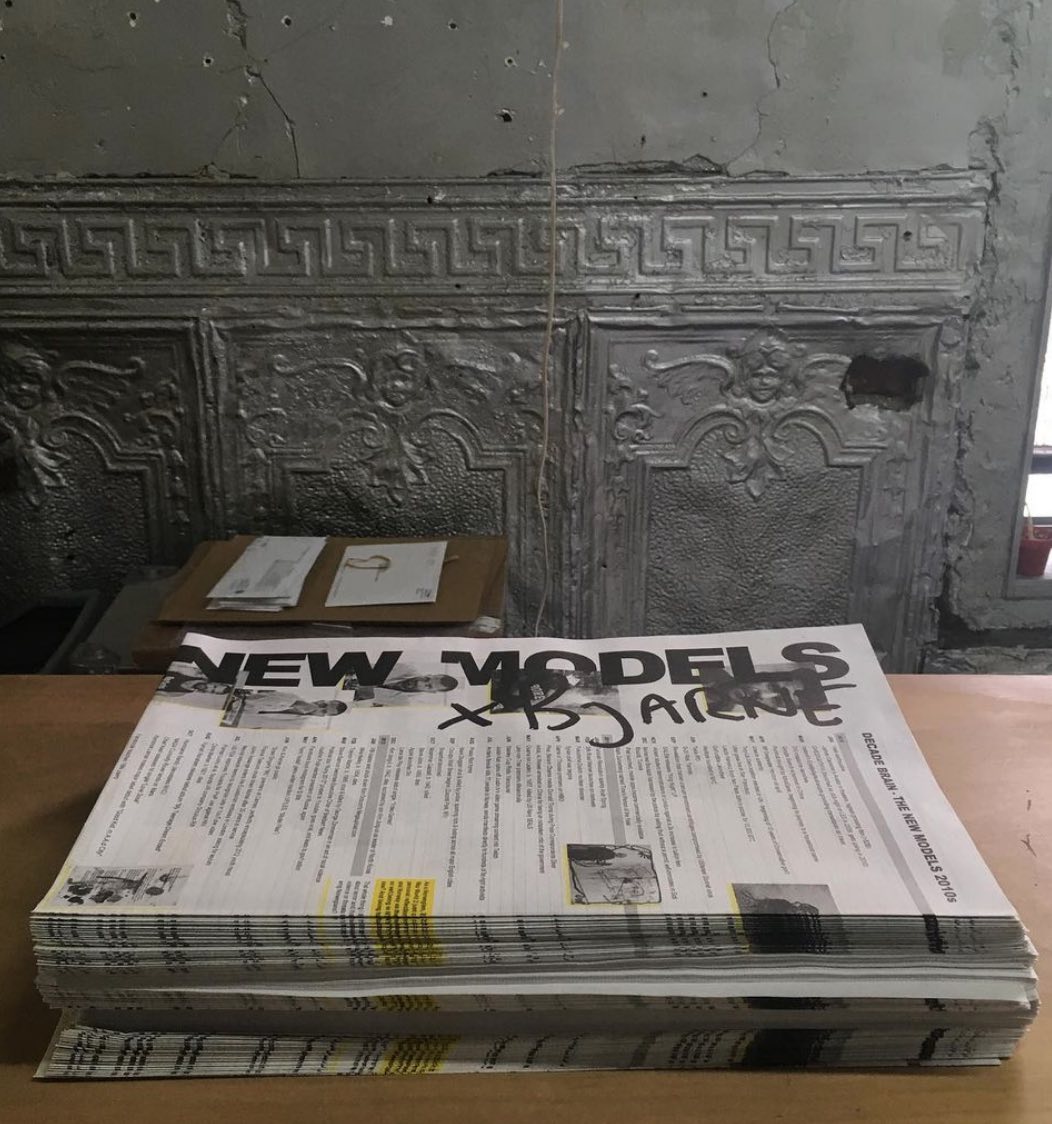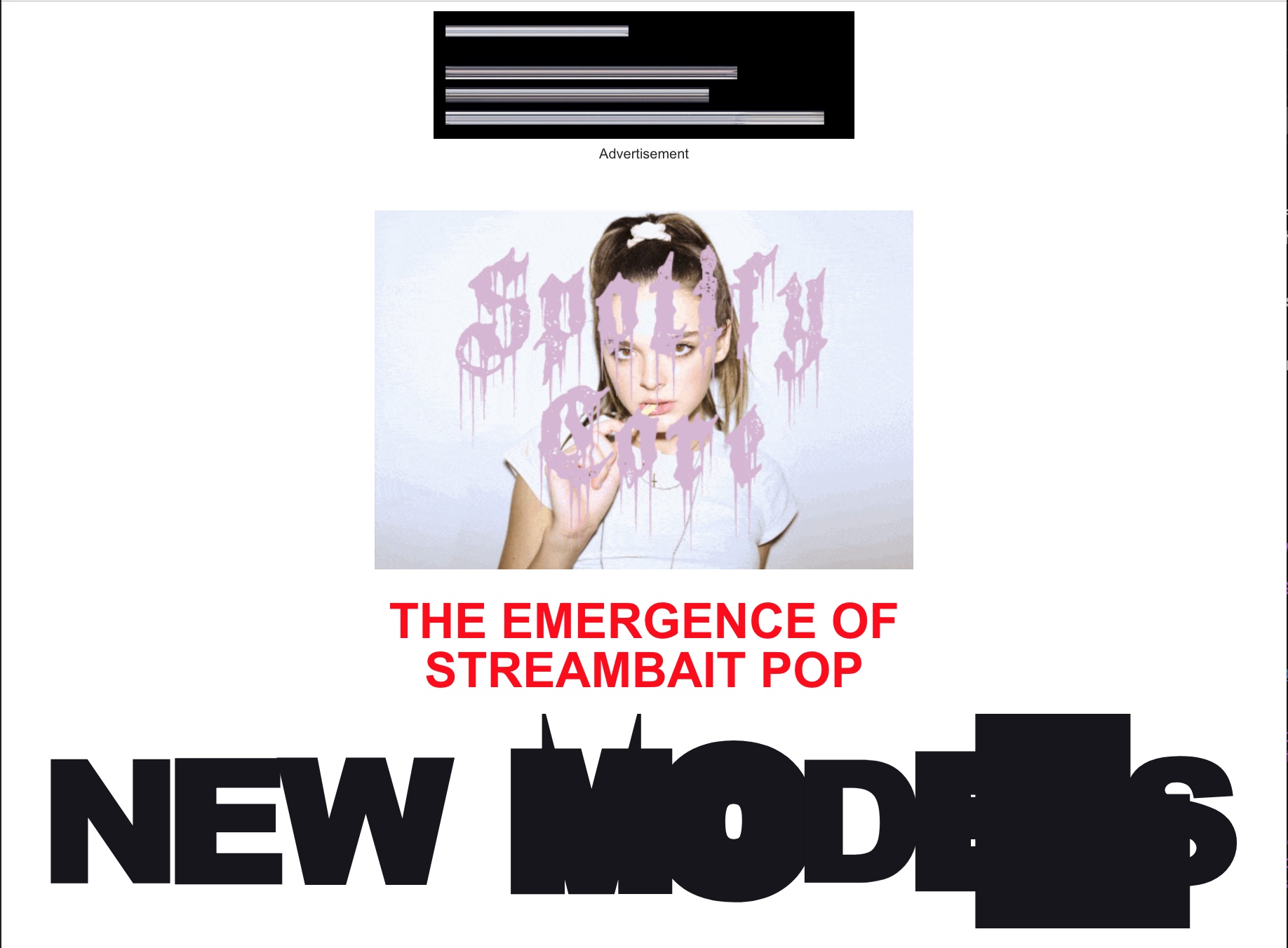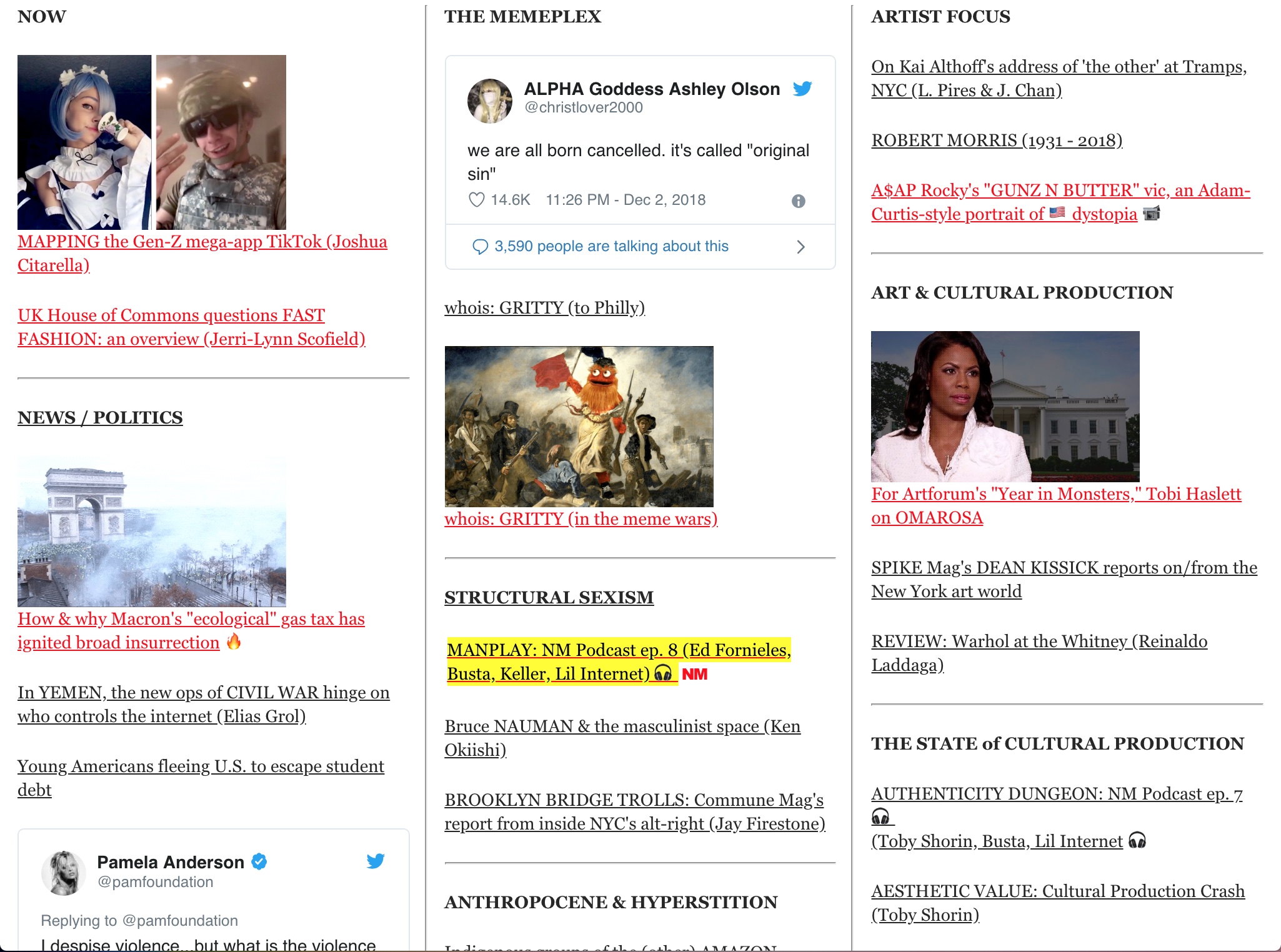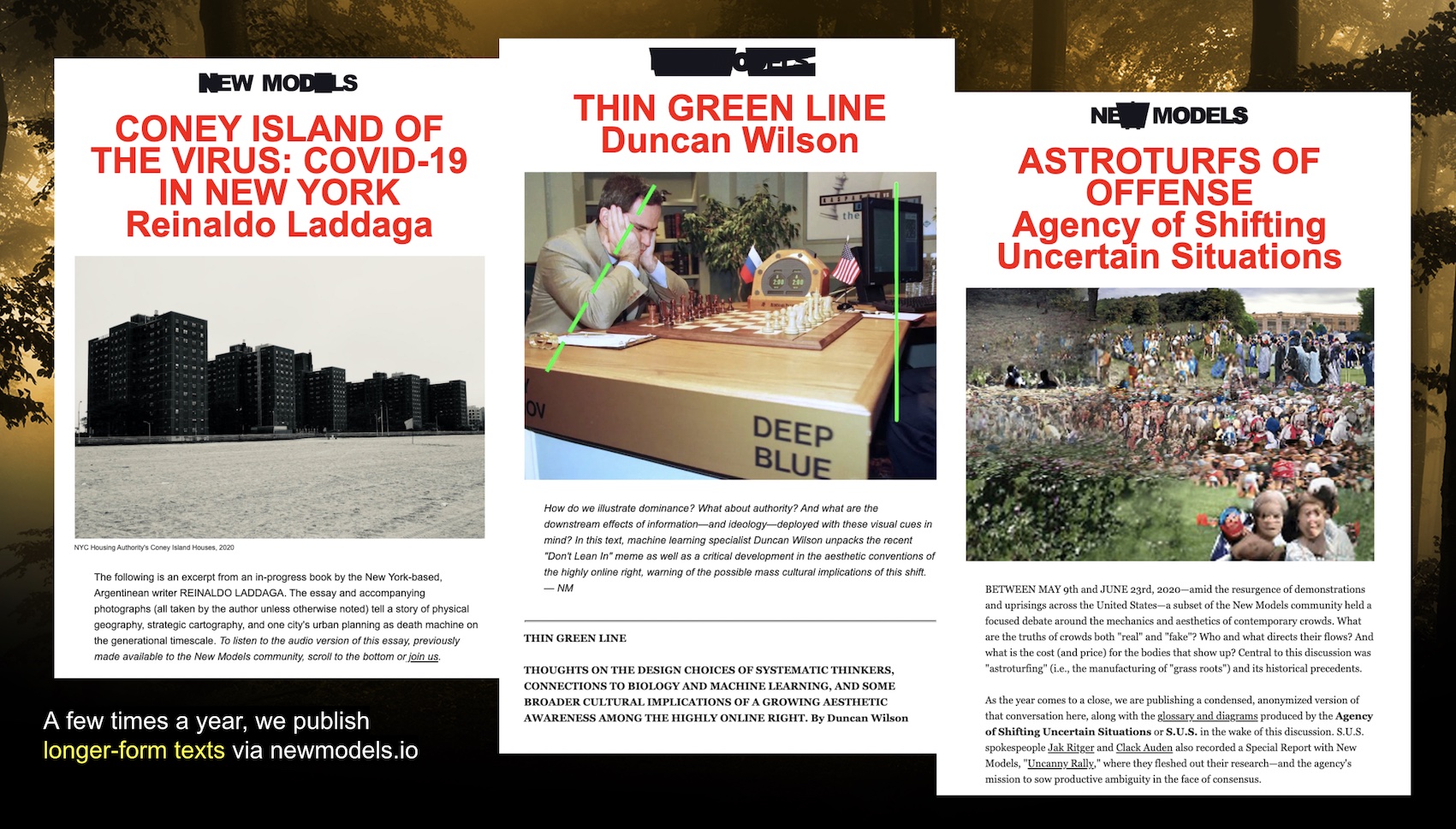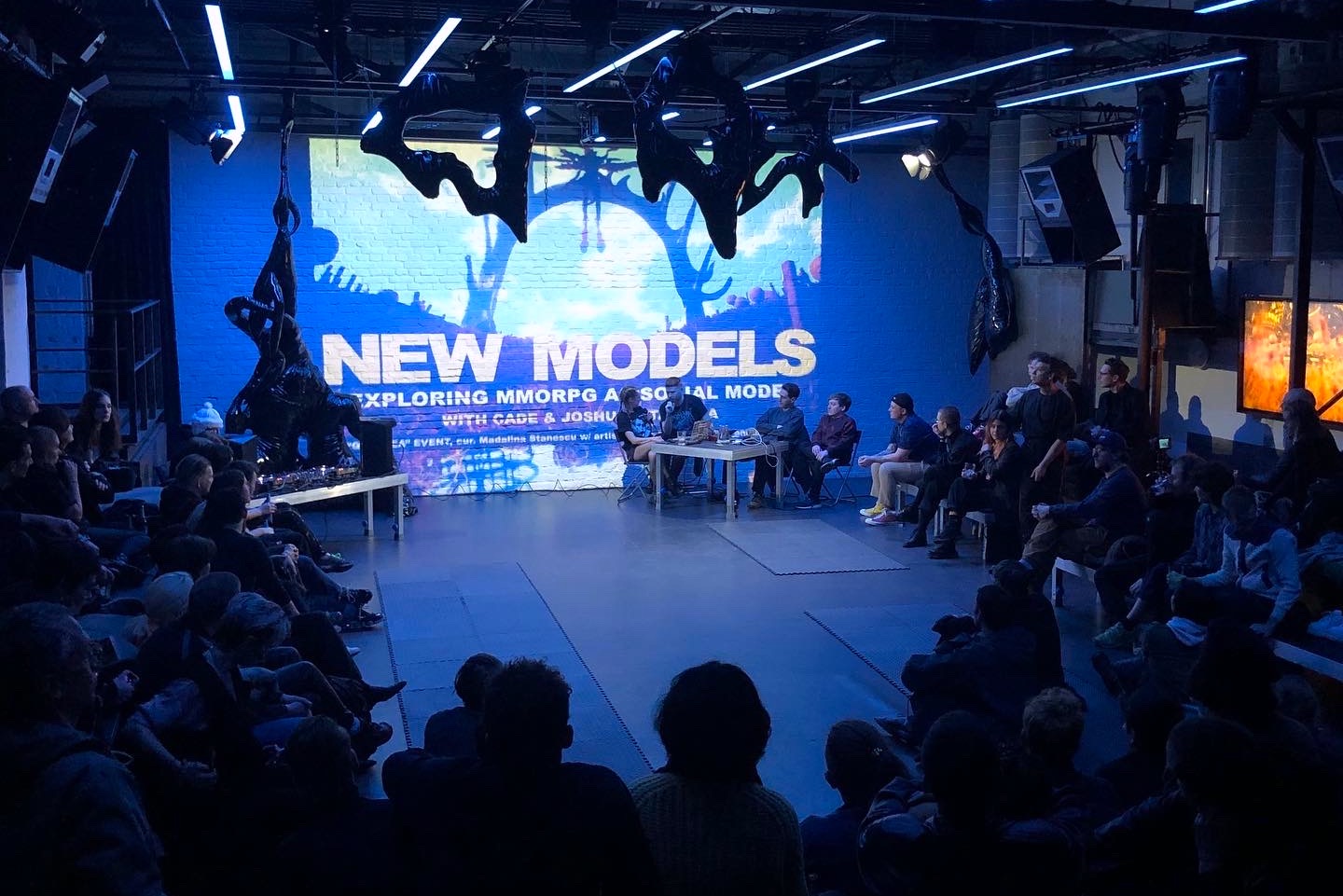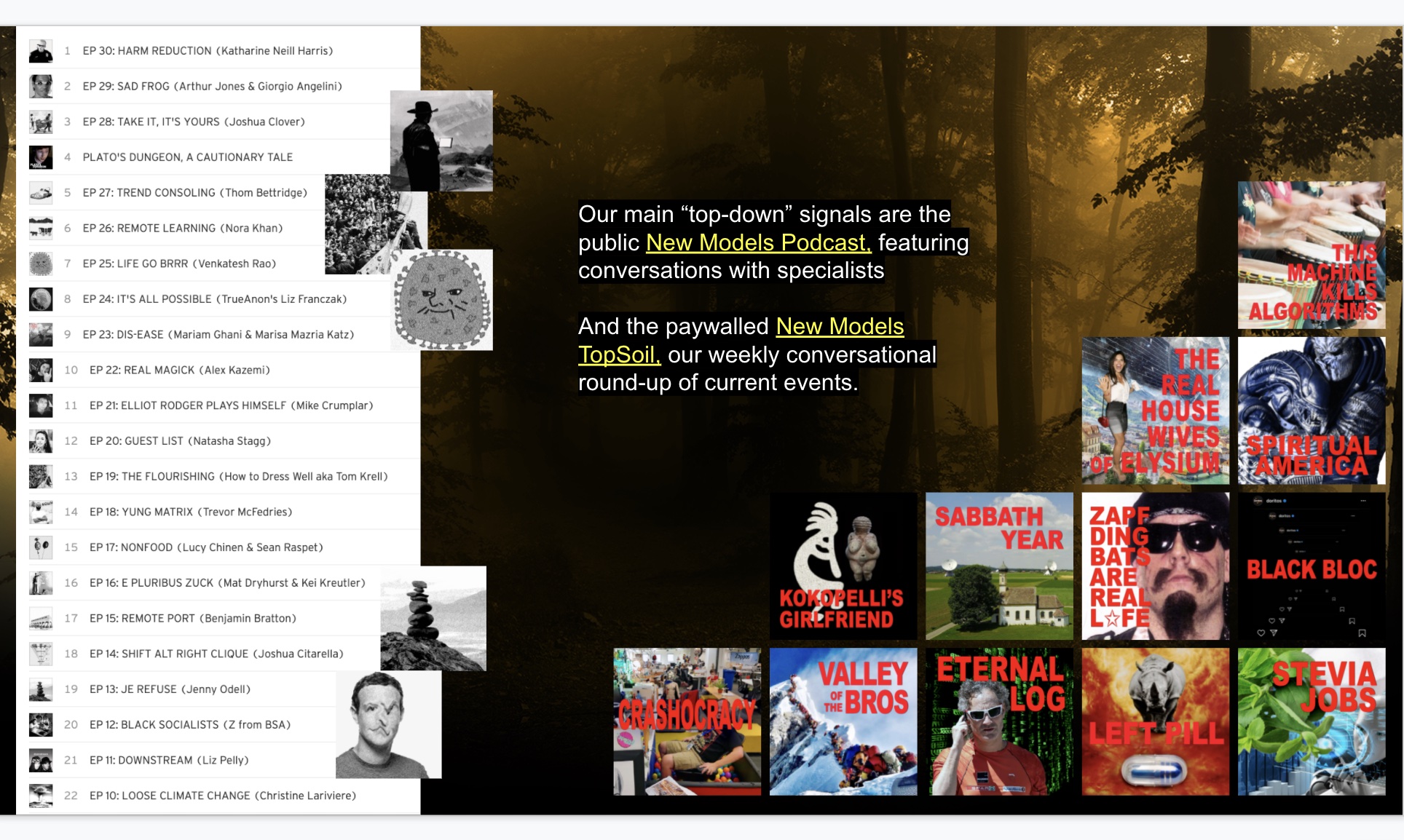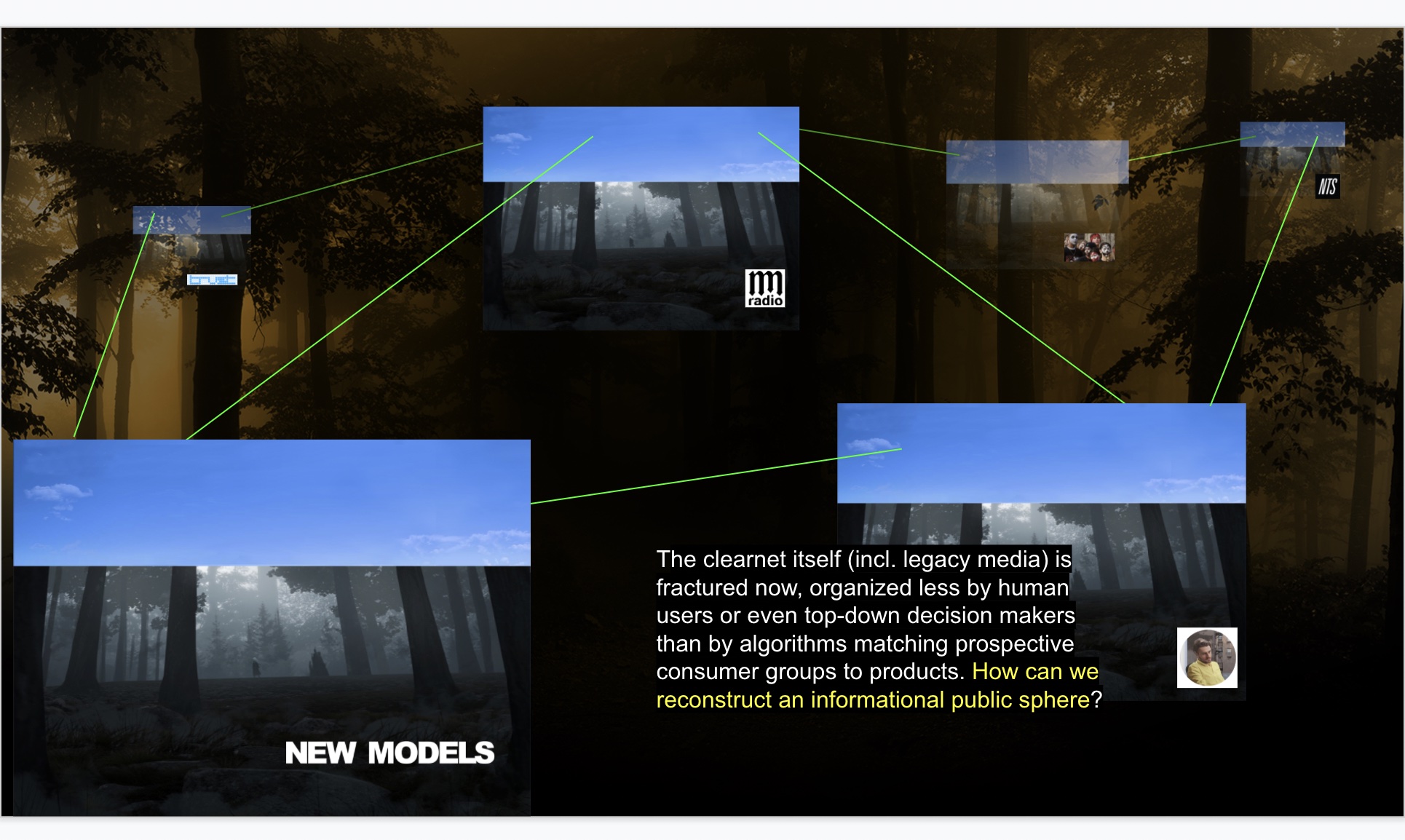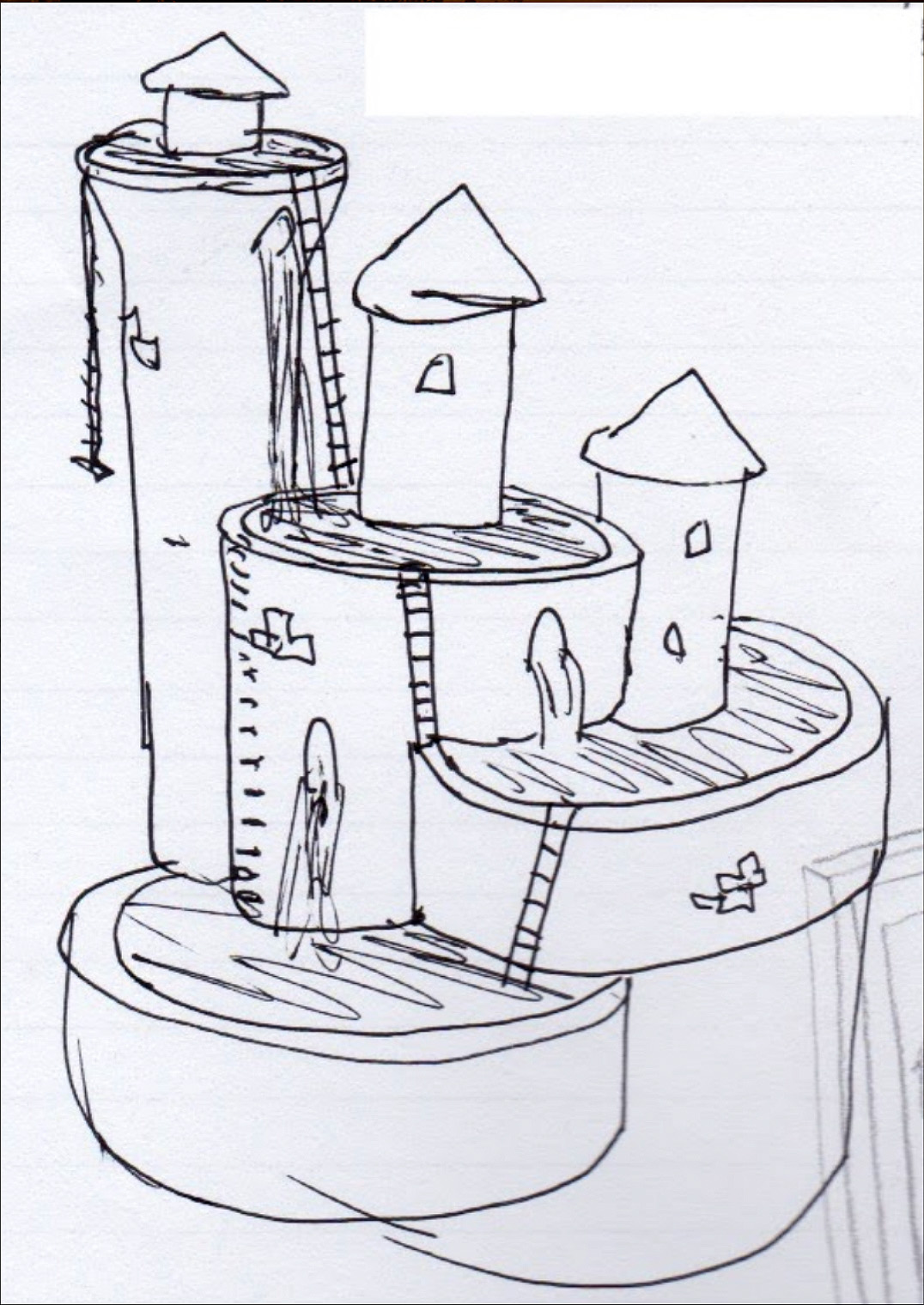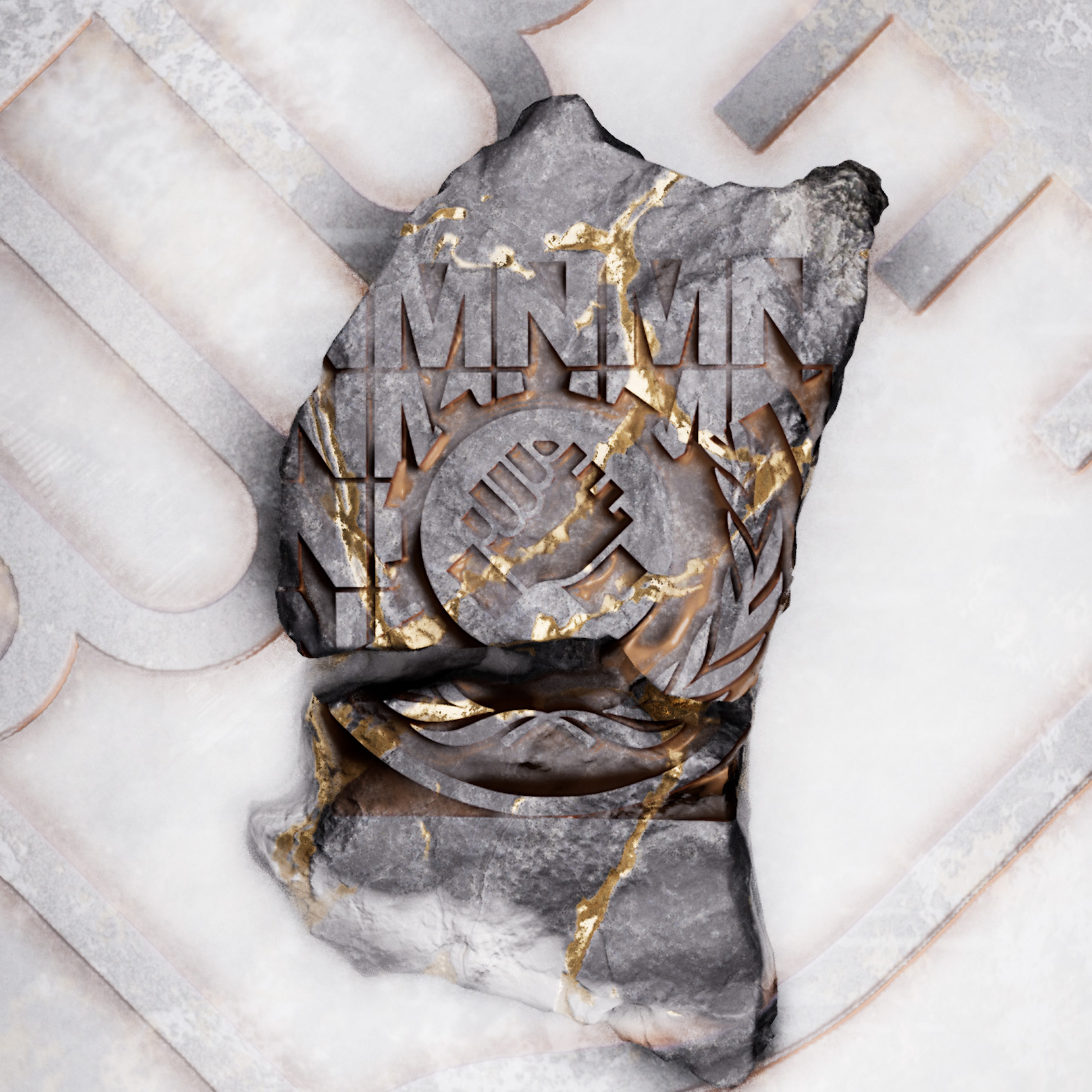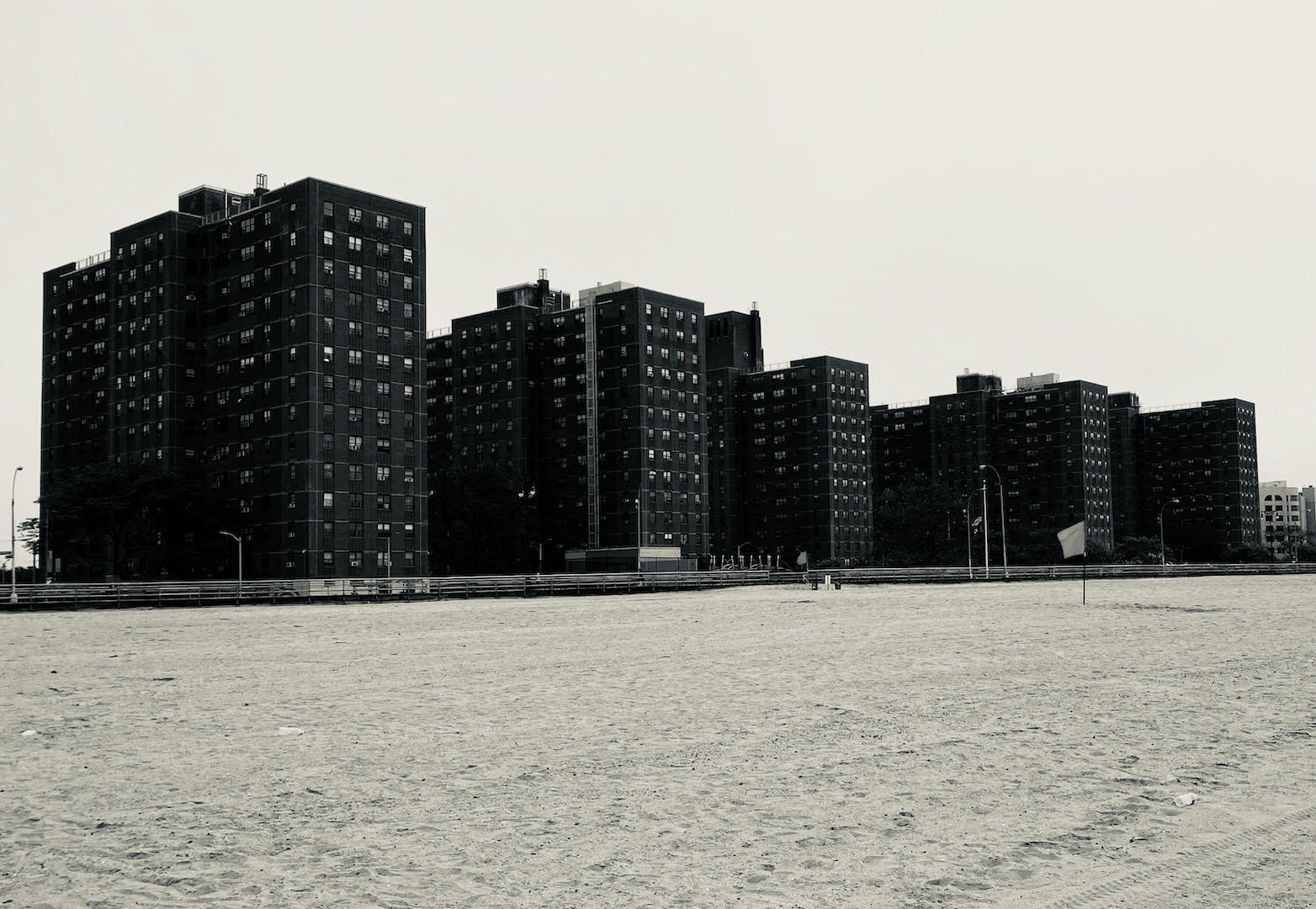
CONEY ISLAND OF THE VIRUS: COVID-19 IN NEW YORK
Reinaldo Laddaga
The following is an excerpt from an in-progress book by the New York-based, Argentinean writer REINALDO LADDAGA. The essay and accompanying photographs (all taken by the author unless otherwise noted) tell a story of physical geography, strategic cartography, and one city's urban planning as death machine on the generational timescale. To listen to the audio version of this essay, previously made available to the New Models community, scroll to the bottom or join us.
During the most intense months of the pandemic, when New York was the epicenter of the world-wide disaster, I took a number of solitary walks through the deserted city. I let myself be guided by two maps produced by the city government that were updated daily on its website. One shows the case rate per one-hundred-thousand residents in each zip code; the other shows the death rate.
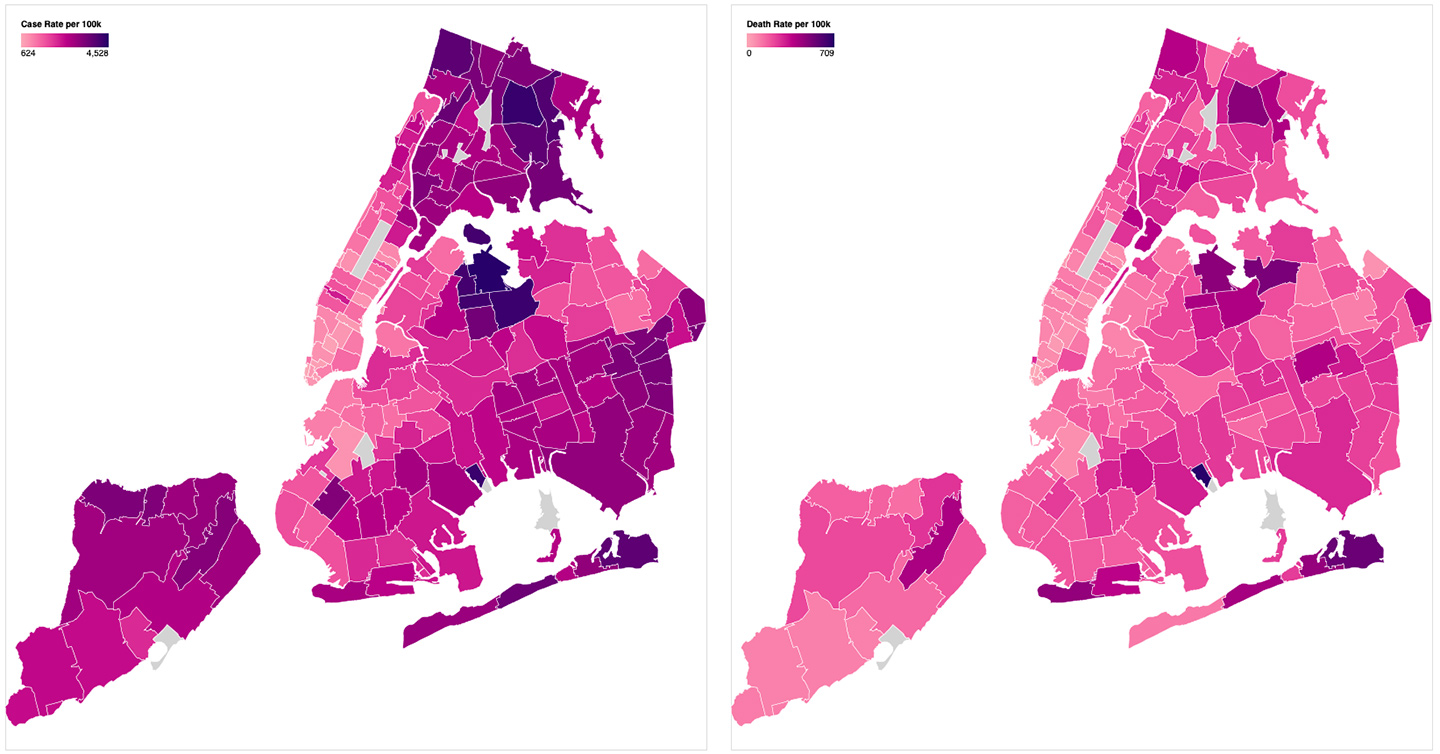
The first of the maps [at left] represents the case rate per capita by postal district in shades of rose and purple. The paler zones have lowest concentration of cases. It’s easy to see that these areas correspond to the New York that most visitors get to know, the New York most often represented in the arts and featured in the media. This includes almost all of Manhattan—except East Harlem and the mainly Hispanic neighborhood of Washington Heights. A pale rose band spreads across the East River along the edge of Queens and central Brooklyn. A few other pale pink islands of health appear here and there, especially towards the northeast, where the city fades into the Long Island suburbs.
As for the high case-rate per capita regions, they are unsurprisingly concentrated on the margins. From the northern Bronx, a blackening purple spreads from the banks of the Hudson, down and across the Harlem River to where the borough borders the Long Island Sound, the deep branch of the ocean that turns into what we call the East River but is actually a body of salt water. Across Flushing Bay, which separates the Bronx from Queens, there’s an intensely dark zone which includes Rikers Island (site of the prison complex) and the extremely diverse but mostly Hispanic and Black neighborhoods of East Elmhurst, Jackson Heights, and Corona, Queens. Darkness grows going down the map as we approach the long, narrow island of the Rockaways, from where one can easily get to other purple spots in southern Brooklyn, around Jamaica Bay and Coney Island. As for Staten Island, high contagion zones appear along parts of the eastern coast and the Kill Van Kull, the narrow tidal straight that separates New Jersey from New York.
There’s nothing surprising about this topography of the illness. The poorer neighbors are the most affected; a disproportionate number of the poor are Black and Hispanic. In most large cities, not just in the US, poor people tend to be pushed to the periphery. In New York, this means being by the water. It is surprising the extent to which the city has pushed so many of its poor and its elderly toward the vicinity of beaches, salt marshes, boardwalks, and piers. One can see this on the second map, which traces the geography of death by Covid-19.
The death map closely follows the case-rate map, but there are some minor nuances and discrepancies. In northern Queens, the mostly Chinese and Korean neighborhood of Flushing has a higher mortality rate than adjacent Corona, which has a much higher case rate. The reason for this is not difficult to guess: the virus mostly kills the elderly and tends to spare the young. Zones with a large number of deaths are zones that host large numbers of older people—more specifically, large numbers of older people living together. Up to 40% of deaths in the US have happened in nursing homes. One reason there’s a dark purple spot spanning the west end of Coney Island, is that it's the site of a vast colony of retirement facilities extending along the shoreline, which they share with a large housing project. Here and everywhere in the city, a symbiosis has developed: nursing homes are largely staffed with residents of the projects, and the virus goes back and forth between the two. How did New York grow the ecosystem for this symbiosis to occur? In this regard, the case of Coney Island is instructive, exemplary, and extreme.
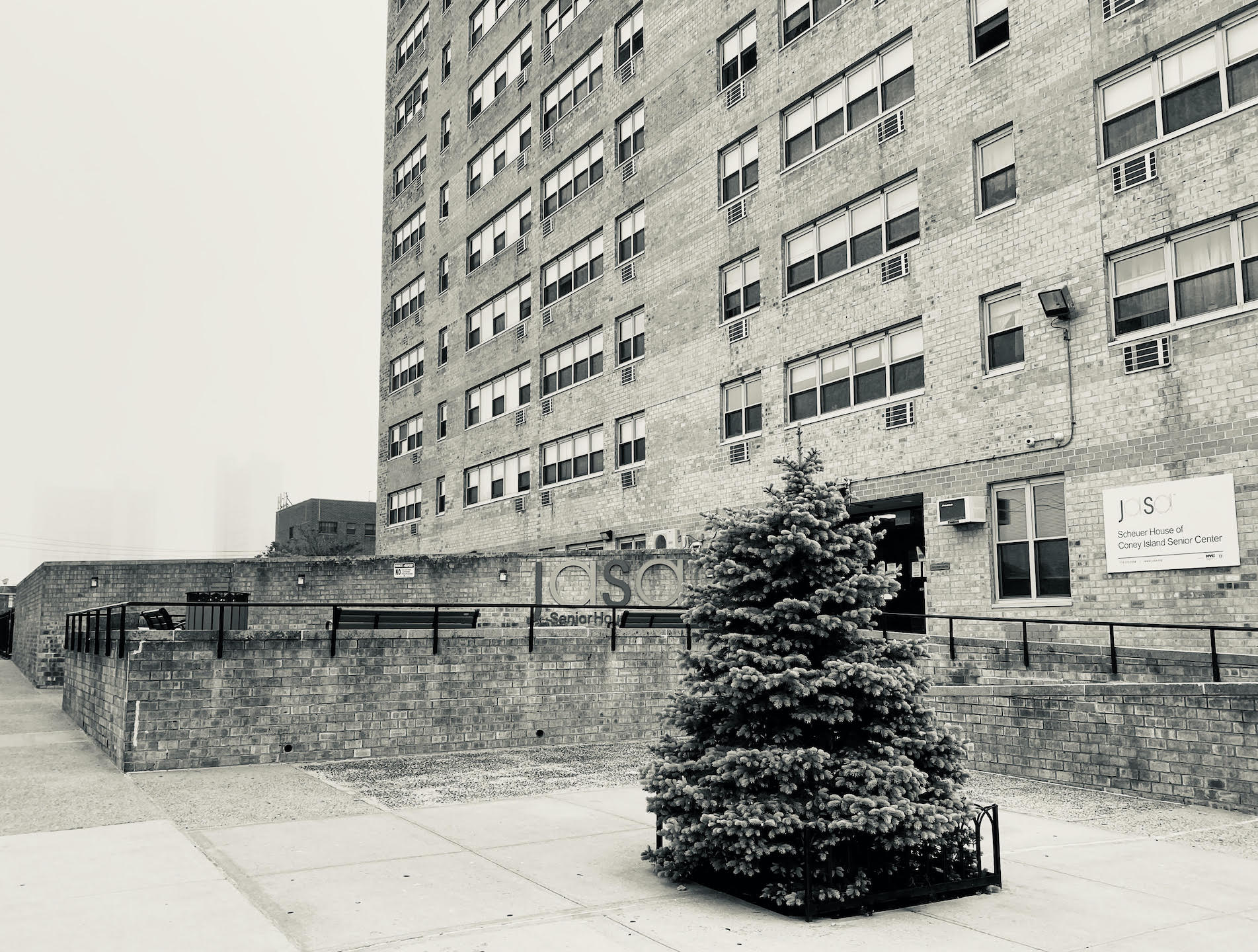
Nursing homes and projects are generally not what comes to mind when we think of Coney Island. We think of amusement parks, fairs, and freaks. If we've seen some of the photographs taken there by Diane Arbus in the late 1950s and early ’60s, the name may evoke brutal and beautiful images of Puerto Rican couples screaming and flame throwers spitting fire. We may not suspect that those photographs were shot when the Coney Island of legend was nearing its definitive demise, and that the last of the classic parks that flourished in the area was about to be demolished by Fred C. Trump, Donald’s father, in a ceremony during which—under the watch of hired ladies in bikinis—he handed bricks to the guests so that they could help him smash the last vitrines standing, before the bulldozers came.
Coney Island is—or was, since the creek that separates it from the continent has been almost completely filled in—a narrow island at the south end of Brooklyn with an extended beach on the Atlantic Ocean. The area, originally a salt marsh, was virtually deserted until the mid-19th century, when steamships started to bring day trippers there to sunbathe. But by the end of the century, it had developed into a burgeoning vacation spot with a strict spatial organization. On the island's eastern half there are two neighborhoods—Manhattan Beach and Brighton Beach—which, back then, hosted luxury resorts designed to attract seasonal, upper-class visitors. The western end offered a very different scene.
A dramatic expansion of the rail lines after the 1870s brought an ever increasing multitude of mostly working class, largely immigrant visitors looking to spend a day at the beach. Catering to this population, a number of restaurants, dance halls, brothels, and bathhouses opened in the western part of the Island. By 1890, the area would attract half a million people on a typical summer Sunday, enticed by the sea and the slapstick comedians, snake tamers, acrobats, and peddlers who received, swindled, and entertained them. Several carousels, a primitive, huge roller coaster, and a three-hundred-foot tower brought from the 1876 Philadelphia Exposition punctuated the then still open landscape. Ocean Parkway, the first paved road into the island was built at the tail end of the 19th century; and in 1896, the first fenced-in amusement park opened.
At the time, Black visitors were banned from amusements, hotels, and restaurants and strongly discouraged from occupying the beaches. Yet blackface performers abounded in the hundreds of concessions and the three self-standing parks that dominated the area during its Golden Age, the first few decades of the 20th century. Among the parks, Steeplechase remained the closest in spirit to carnivals and freak shows. Its human exhibits featured not only "midgets and giants," but all sorts of “primitive and savage people” (“giraffe-necked” Burmese women, Berber nomads, Somali warriors, Turkish dancers). But customers equally enjoyed watching each other tumbling and rolling in the Human Roulette Wheel, or being terrorized by a stick-carrying clown in the massive glass-and-metal clad Pavilion of Fun.
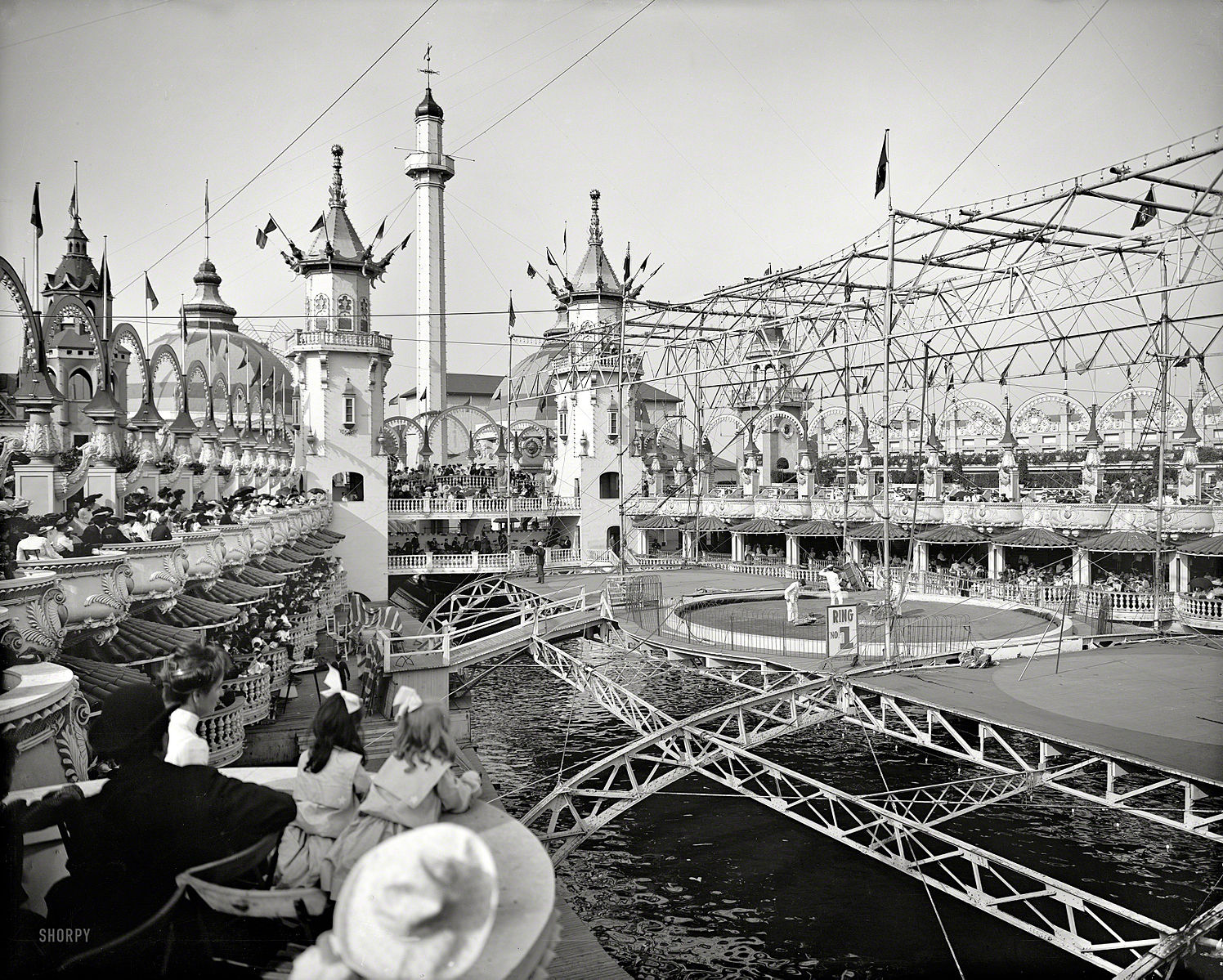
Slightly to the east was Luna Park, intended to offer a more high-brow kind of entertainment, less focused on the rough thrills of gyrating platforms and ferocious clowns and more on the creation of an alternative reality ruled by the new gods of electricity and speed. Seaward from Luna was Dreamland Park, whose towers and minarets of an impossible architecture (their legacy lives on in Disneylands worldwide) provided the scenery for tattooed bulls and contortionists, the hundreds of stunt men who reenacted disasters both man-made and natural, and the Little People of the town of Lilliputia (population 300, built to resemble a 15th century Nuremburg, Germany, except at half-scale). Dreamland was meant to attract higher class patrons, those more discerning visitors who preferred to navigate serene canals on Venetian gondolas, climb a monumental Moorish tower ring above a lagoon surrounded by a track for chariot races, or visit the premises of the Infant Incubator, a pavilion where scores of premature babies were exhibited in diminutive vitrines while nursed to health by faux medical doctor Martin Couney. Millions of electric bulbs imbued the massive buildings and cardboard statues, all painted in immaculate white, with a splendor that would have made it hard to conceive of Dreamland’s imminent demise.
But the twin scourges of fire and catastrophic mismanagement hit all of the parks hard. Dreamland burned down in 1911 and was never rebuilt; Luna Park managed to hang on for three decades more, fading away slowly until 1946 when it was bought by Fred Trump, who proceeded to build high-rises in its place. But Trump was not the only one bent on clearing away the past. Starting in the 1920s, the city, under the watch of Robert Moses, initiated two massive undertakings in the area: restoring the beach, which, due to erosion and overuse, had shrunk to a narrow band; and building a wide, elevated promenade running the length of the island. This initiative required razing parts of Steeplechase and Dreamland and pushing out a number of concessions that thrived in the vicinity of the sea. It should be noted that Trump was also not the first one intent on turning parts of Coney Island's entertainment district into a residential zone: recent immigrants, mostly Italians and Eastern European Jews, were already settling the north side of the island, beyond the amusement area whose western limit was marked by the exoticist structure of the Half Moon Hotel.
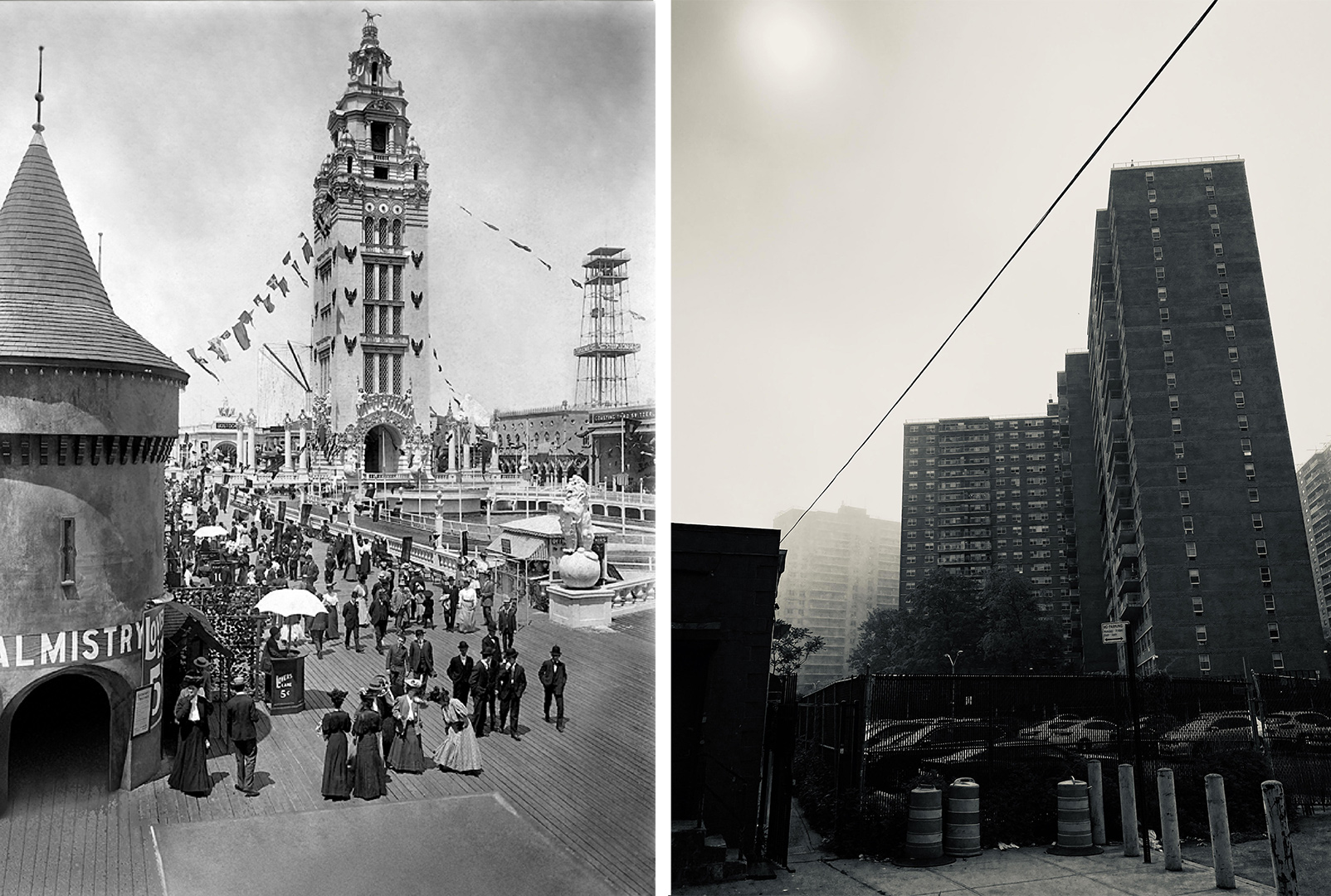
The conditions for a more decisive transformation, an aspiration which reformers had held for decades, were provided by Moses's irruption into the scene. It’s impossible in a short article like this to do justice to the sheer number of projects that Moses completed in the span of a quarter of a century through his diverse roles as the man responsible for the building and administration of the city's parks and highways during the 1930s and ’40s, and for the clearing of slums and relocating of their residents in the crucial decade of the 1950s. His impact on Coney Island was as immense as his dislike of the amusements it offered and the customers that patronized them. Moses had a firm belief in the positive effects of exercise and outdoor activities on the mental and physical health of the people. This conviction guided his construction of an astonishing number of pools and playgrounds across the five boroughs and the refurbishing and extension of existing parks. It also inspired two monumental projects on the seaside: Jones Beach on the southern coast of Long Island and Orchard Beach where the Bronx opens onto the Long Island Sound's Pelham Bay. He expected that people residing in the upper part of New York, who until then had been traveling on weekends and summer days to Coney Island for sun and excitement, would fill Orchard Beach. But those same people, unimpressed by the charms of what the newspapers called the “Bronx Riviera,” continued to crowd the trains to southern Brooklyn. Moses, in turn, used his power to make sure there would be less attractions awaiting them.
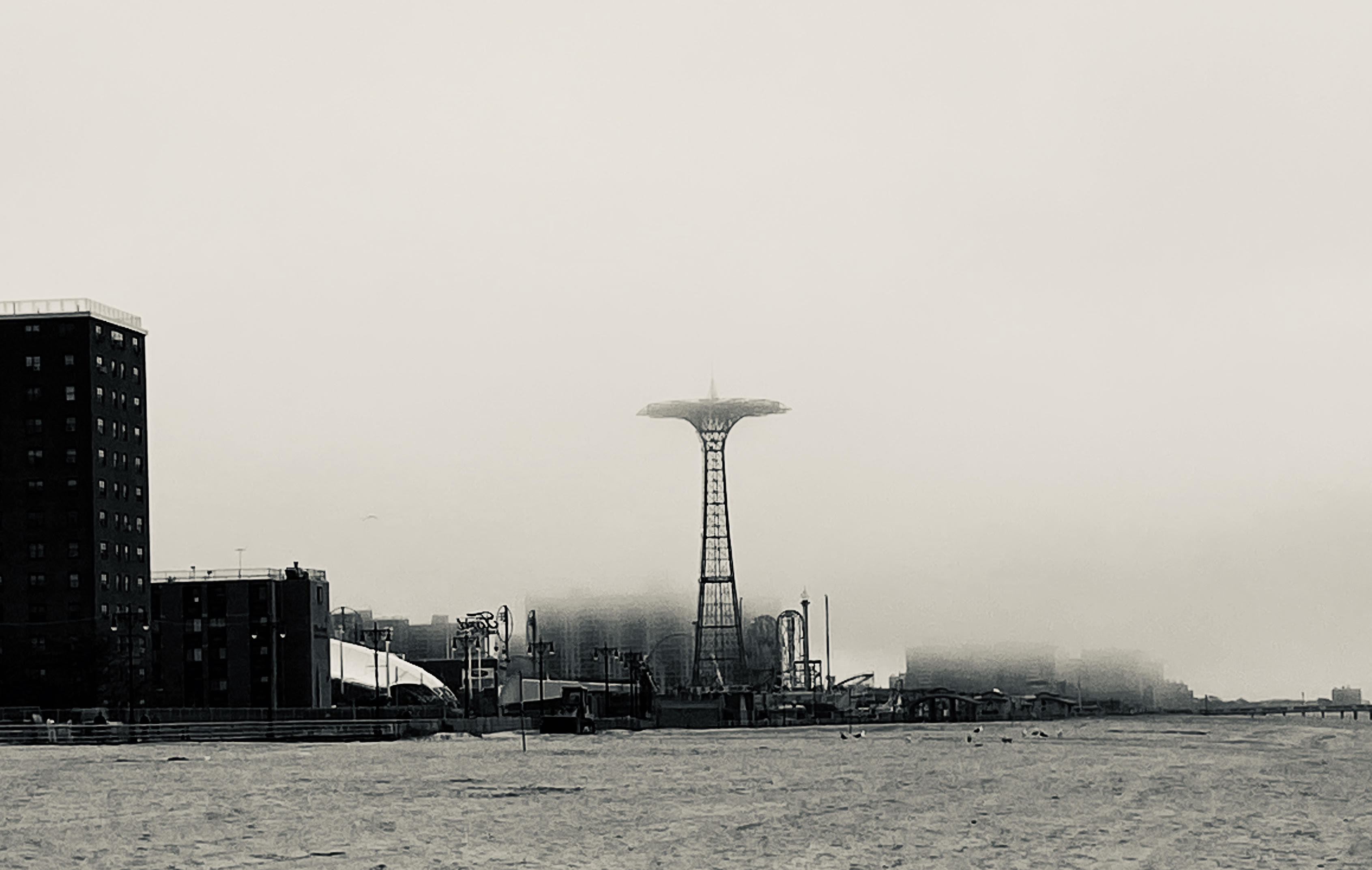
The need to restore the perpetually disappearing beach provided the outsize public official with an opportunity. He would move the boardwalk further inland, eating even more deeply into the concessions and the parks. At the same time, he would import immaculate, pale sand to create a regular surface, a 'valuable public asset' that he could fiercely protect. Moses achieved this by introducing severe regulations: he prohibited the presence of vendors, jugglers, singers, and admen on the boardwalk; as well as phonographs and poker games on the manicured beach. “There must be a new and very different resort established in [old Coney Island’s] place,” he averred. “There must be more land in public ownership, less overcrowding, stricter enforcement of ordinances and rules, better transportation and traffic arrangement, less mechanical noise-making and amusement devices and side-shows, and a more orderly growth of year-round residents.”
This last decree, a “more orderly growth of year-round residents” was meant to be achieved by using one of the most powerful tools at the disposal of the urban planner: re-zoning. Until the 1940s, most of the land bordering the sea had been slated for recreational establishments; under Moses, it was officially opened for residential use. This allowed the city to acquire property and sell it to private developers or to turn it into government-subsidized low-income housing. The process caused a further contracting of the amusement area, especially the more lawless blocks of betting parlors, drug dens, and dance halls known as the “The Gut,” which today’s is the site of the largest concentration of nursing homes in the city and has been one of the main death zones during the Covid-19 crisis.
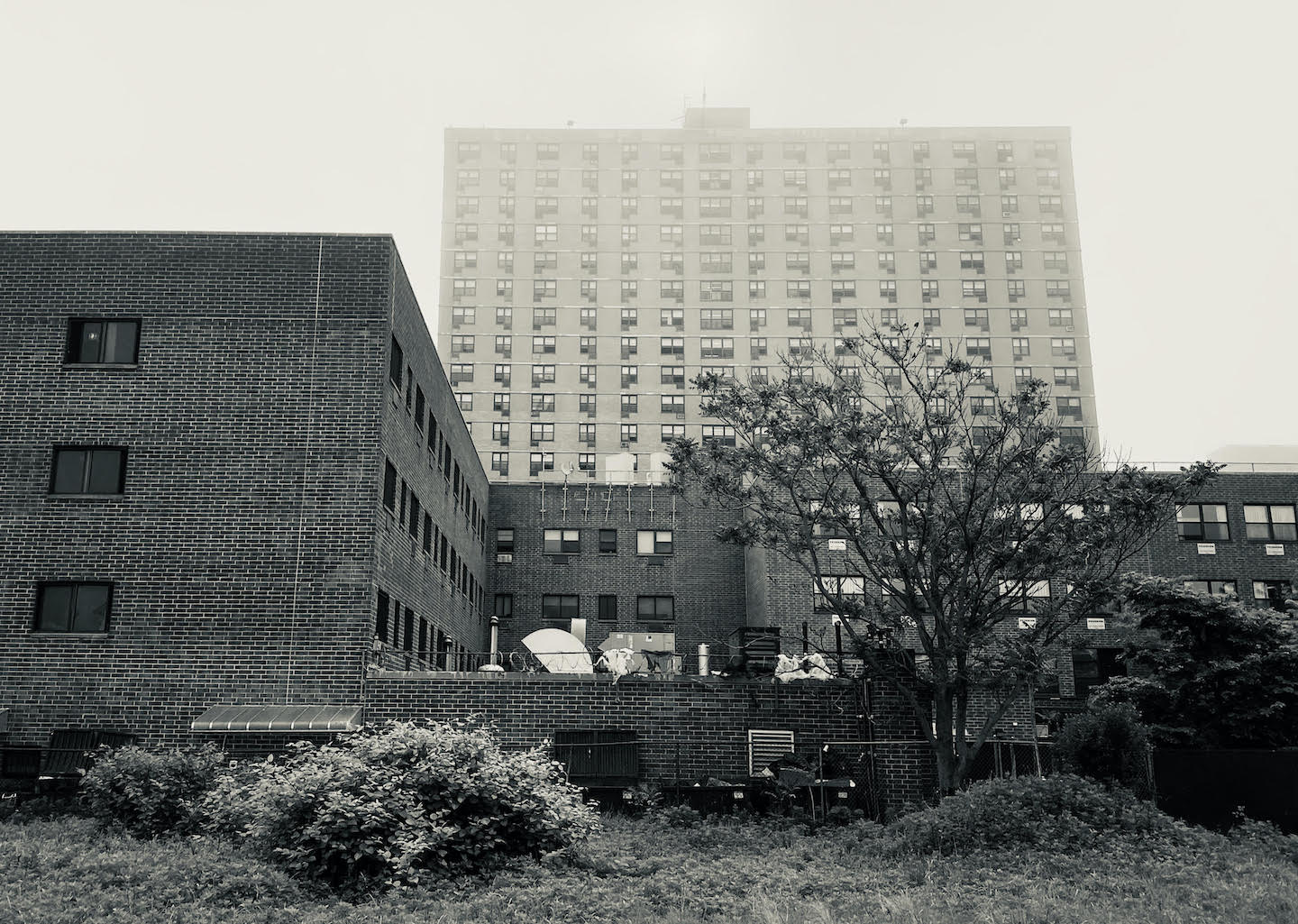
By the mid-20th century, many New Yorkers who had formerly rented bungalows on Coney Island now had access to automobiles, allowing them to go camp in the farther shores of New Jersey. The Italian and Jewish residents, meanwhile, were also less frequent patrons as more and more fled the city to join the white middle class in the suburbs . The area’s transformation was accelerated by the loss of local jobs due to the crisis of the entertainment economy—which deepened during and in the aftermath of the war—and by the forced resettlement of large contingents of Hispanics and Blacks to the area, pushed from Harlem and parts of Brooklyn by the programs of slum replacement led by Moses. To receive them, the New York City Housing Authority, in 1957, built the Coney Island Houses, five hundred apartments across four buildings erected next to the boardwalk.
Four years earlier, in 1953, the Hebrew Home and Hospital for the Aged had purchased the Half Moon Hotel (by then, operating as a maternity ward), and turned it into the Metropolitan Jewish Geriatric Center. In the following decades—during which the Coney Island Houses were joined by the still bigger compound of the Gravesend Houses—scores of facilities for low income elders were built in the place formerly occupied by single family homes and summer bungalows. The result was a scenery as singular as any in New York. When I visited recently, on a foggy morning, at the time when nursing home residents are allowed to go out and can be seen with a coffee or a cigarette sitting by themselves along the boardwalk, the super-simplified landscape, with rows of identical buildings rising on a geometrically defined, empty space was singularly eerie. It was as if the buildings, despite their massiveness, were not grounded but posed. Perhaps the feeling of uneasy equilibrium was reinforced by my awareness that this part of the city is among the most exposed to a rising sea caused by global warming, and by my memory of large sections of it being utterly devastated by Hurricane Sandy almost a decade ago.
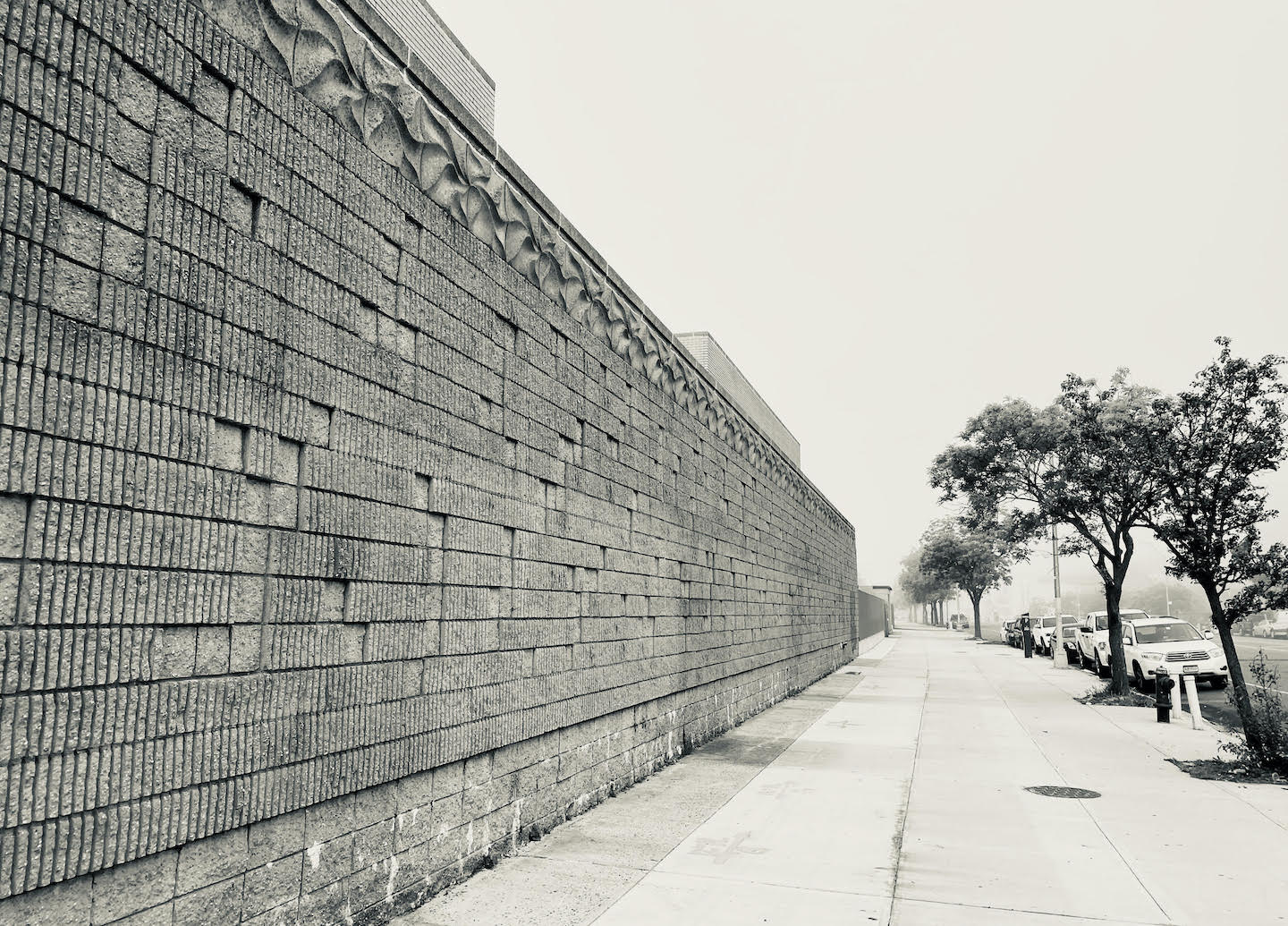
This precariousness in the face of the ocean is something that Coney Island (as well as some of the other districts where the symbiosis of housing projects and facilities for the elderly has evolved, most dramatically in the Rockaways) has in common with Florida's Miami Beach. But the similarities don’t stop there, as real estate developers blithely and recurrently stress. Back in the ’60s, Fred Trump commissioned the design for Trump Village (his biggest project in the area) from the firm of Morris Lapidus, which had designed Miami hotels Sans Souci and The Fountainbleu—flamboyant examples of the mid-century "Miami Modern" style, which was all the rage at the time and had become synonymous with luxurious resort living. While visiting the area recently, I was intrigued by two 21-story, glass towers being built at the extreme west of Coney Island, between the Oceanview Manor Home for Adults and the fences of the private Sea Gate community. Called Ocean Drive, the project is, I learned, the initiative of billionaire John Catsimatidis (founder or Red Apple Group, a major FIRE sector conglomerate that also owns NYC grocery chain Gristedes) via his development company, Red Apple Real Estate.
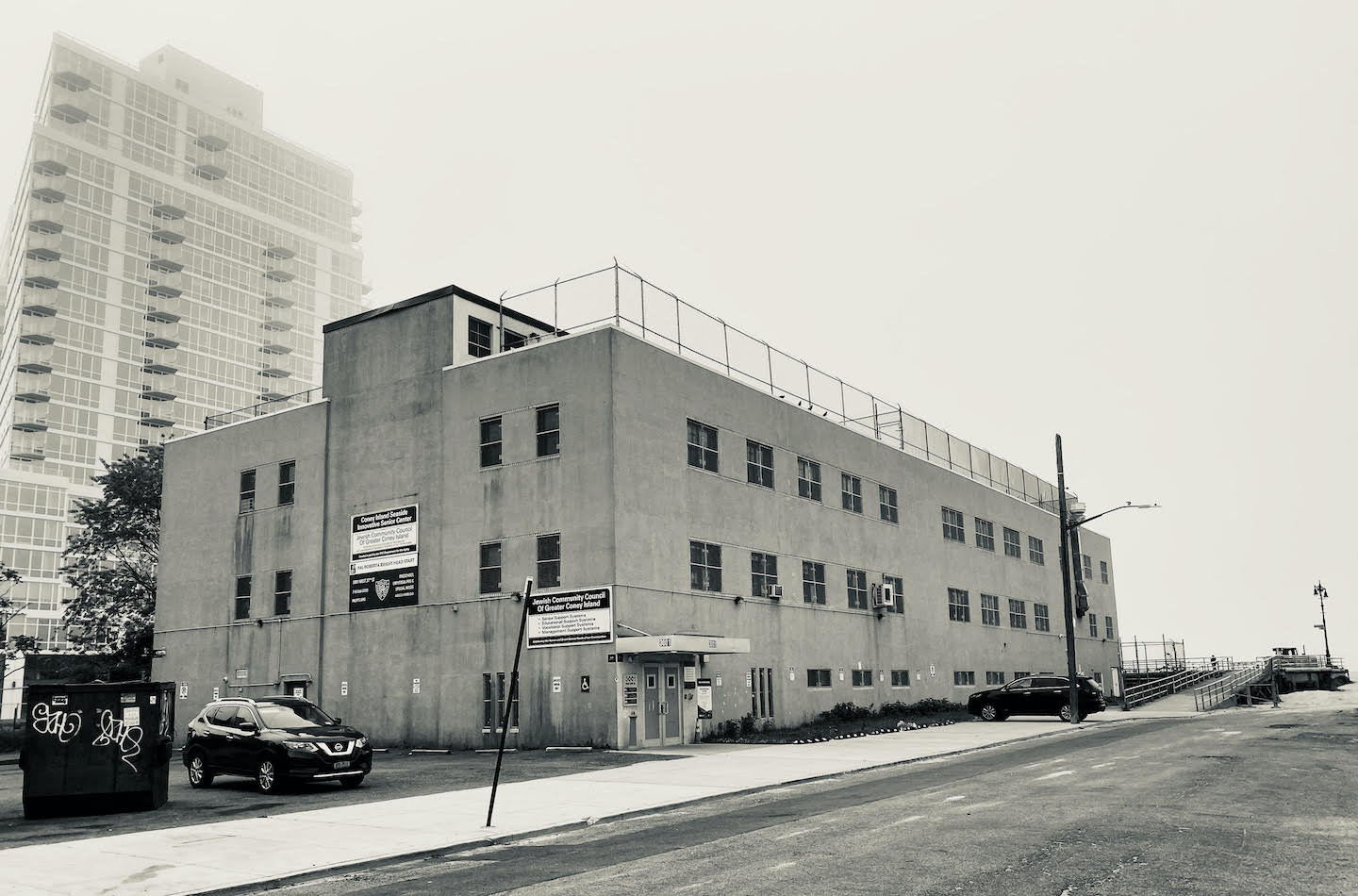
Likewise invoking Florida's Gold Coast with its promise of bringing "'Miami sophistication' to the Coney Island Boardwalk," the Ocean Drive complex looks like nothing else one finds in the vicinity. But its type is familiar: it resembles the numerous upscale residential buildings that have recently appeared in unexpected points of Harlem, Brooklyn and Queens. "Custom designed residences for modern living,” reads the Ocean Drive site, which promises apartments fitted with the best European appliances, oak floors, marble countertops and oversize windows to let the breeze and sun come in; plus "24-hour concierge and valet service available (dry cleaning, dog walking, repairs and delivery) to cover your busy lifestyle, everything you need is at your doorstep.” The architectural firm responsible for this project is Hill West, a favorite of hard-hitting developers and which has collaborated with such global luminaries as Herzog & de Meuron and Christian de Portzamparc for similar buildings all over the city. The project description for Ocean Drive emphasizes the development's location "outside of the gated communities in the surrounding neighborhood," going on to explain how it will "enhanc[e] the area with a large retail space set to house a quality neighborhood food store, improv[e] the boardwalk and street ends, and ushe[r] in a rebirth to the area." In this way, the two towers will become the farthest node of a network of high-end constructions that is extending all over New York, and whose most massive instance rises in Midtown Manhattan: Hudson Yards.
Soon the towers will be receiving new residents, who will be able to have placid meals in the round wooden tables of a restaurant about to open on the cleanly swept promenade. After dessert, perhaps they'll stroll the premises of the safe and smallish new "Luna Park," opened ten years ago by Central Amusement International, a subsidiary of the Italian rides manufacturer Zamperla. If the renaissance developers promise actually takes place, they will have to credit their success in part to the Coronavirus: all around the buildings and outside of the gated communities, old people and low income Black and Hispanic neighbors are dying at one of the fastest rates in New York. Given that at least some of the nursing homes will certainly be shut down and razed, it is not outlandish to see this as the logical conclusion of a process Robert Moses initiated when he erected a number of stark, brick buildings on the boardwalk to relocate tenants from the Manhattan slums, and when the Hebrew Home and Hospital for the Aged acquired the Half Moon Hotel repurposing it as a retirement facility.
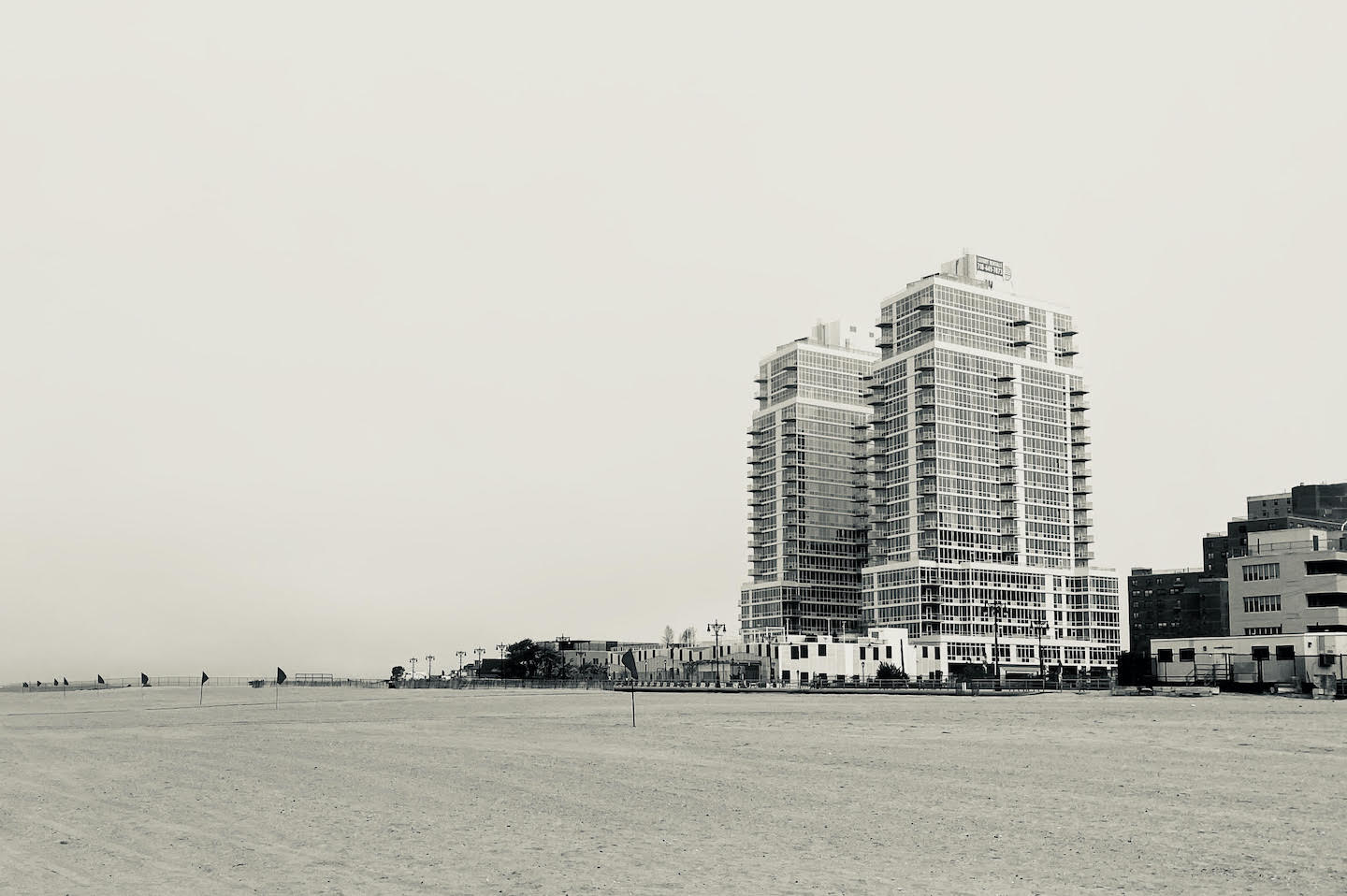
And so another cycle seems poised to begin. Barring a collective, species-wide change of direction, this one will likely be shorter, however. Fire has historically been the scourge of Coney Island, burning down parks and hotels and opening a path for urban planners and real estate developers. Today it is the coronavirus. But the scourge of tomorrow might prove the hardest to tame of them all: the creeping swell of the sea.
Published: July 2020
REINALDO LADDAGA is an Argentinean writer who lives in New York. He has taught literature and criticism at the University of Pennsylvania, Princeton University, the Pontificia Universidade Catolica de Rio de Janeiro, and the Universidad de Rosario, Argentina. For more: rladdaga.net
